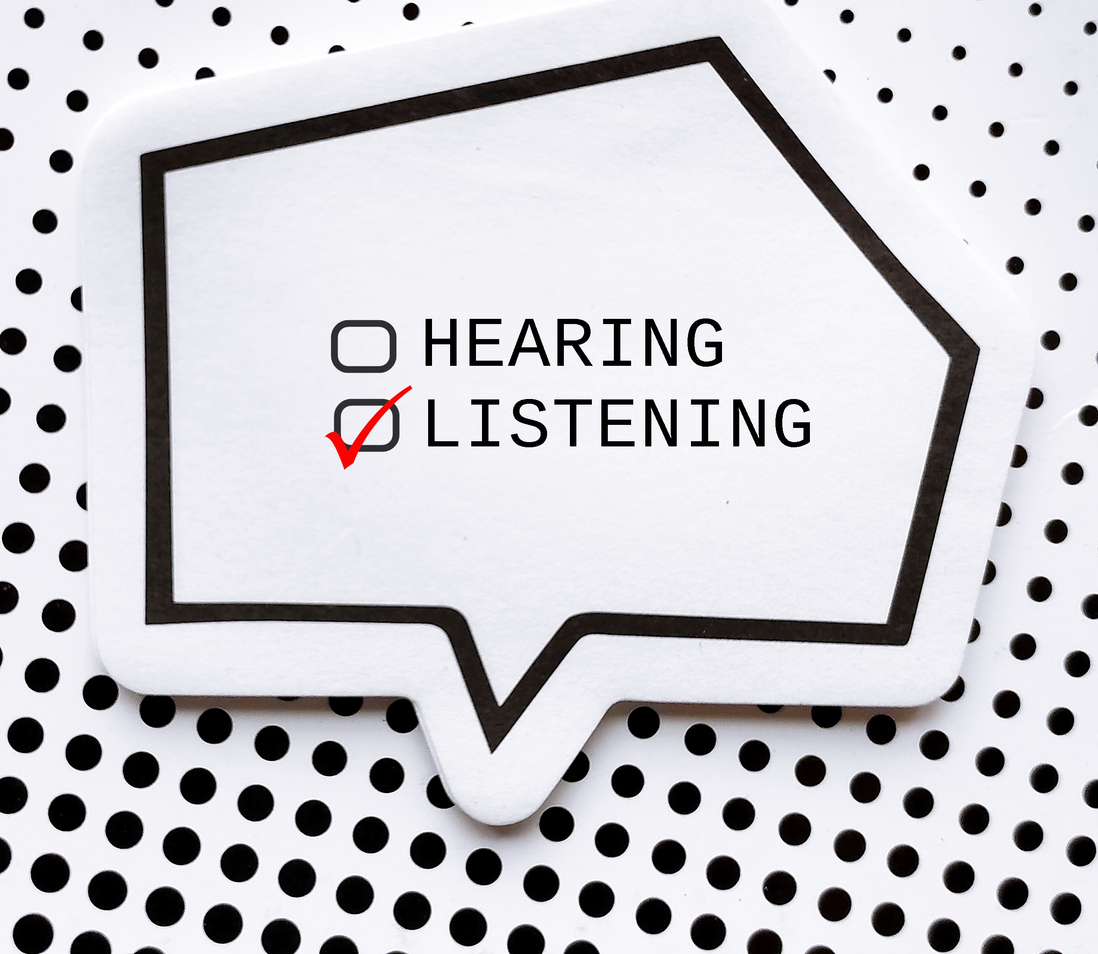
Active listening is a behavior we can improve.
You’re telling a colleague about something that happened yesterday. You finally drop the most surprising part of the story, and you’re met with a blank look and “uh-huh.” In that instant, you know they haven’t been listening. Their eyes shift from a point across the room back to your face and they realize they’ve been caught.
It doesn’t feel good, does it? It might feel even worse for your colleague, who realizes they have been outed as insincere, at best.
Next time, you might avoid confiding in that person. They might feel uncomfortable around you. It might not be a big deal, but it certainly didn’t make your relationship stronger.
Humans have a fundamental need to be seen and heard.
Listening is respect; it lays the foundation for trust-based relationships and shared understanding, without which teams can’t succeed.
So how do we become good listeners? Active listening is a behavior we can improve and, like all behaviors, it requires both “being” and “doing.” Think of your being state as your attitude and intention. The doing state is observable behavior.
How to Be
- Be neutral. This is a variation on mindfulness, or non-judgmental awareness. Being human is messy; the person who is speaking has emotions and thoughts that might not seem logical or sensible to you. And they don’t have to! Don’t feel like you must respond right away. Suspend your judgment. First, just listen and try to understand.
- Be curious. Imagine the two of you are carrying backpacks into the conversation. The backpacks are full of experiences and habitual emotional responses built up over a lifetime. To listen well, take off your backpack. Forget yourself for a little while and experience what the other person is saying from their point of view.
- Be regulated. Sometimes we hear things that bring up our own discomfort. Try to regulate your physiology so you don’t react to your own internal responses. That will help you stay present. In other words, “practice the pause.”
What to Do
- Tune in. Eliminate distractions. If you’re face-to-face, start by turning off your devices. If you’re connecting remotely, turn on your camera and minimize other windows. Give yourself and the other person the gift of space they can fill with their message.
- Take in what is happening in front of you. As you listen, what are you seeing and perceiving? What kind of energy or mood state is this person demonstrating? What’s their rate of speech? How is their breathing? What are their gestures and eyes doing? Once you do that, you can confirm that you are beginning to understand. For example:
- Check in. Share something like, “I noticed you got quiet when you talked about your performance review” or, “When you talked about that project, you seemed excited.”
- Use their words. If someone says they’re frustrated, you can simply say, “Frustrated.” If someone says they enjoy project management, you can say, “You enjoy project management.”
- Sometimes people just want to vent. They’re not looking for a solution, but rather an open and safe space to hear themselves think. Before inserting your ideas or opinion, ask, “Do you want to be heard, or do you want me to offer feedback?” Then make good on their answer. And if you’re at a loss, ask, “How can I help?”
The more you practice, the stronger your active listening muscle will get. As you turn active listening into a daily habit, you’ll promote an inclusive and productive culture and more easily sustain high-performing relationships at work and in life.




